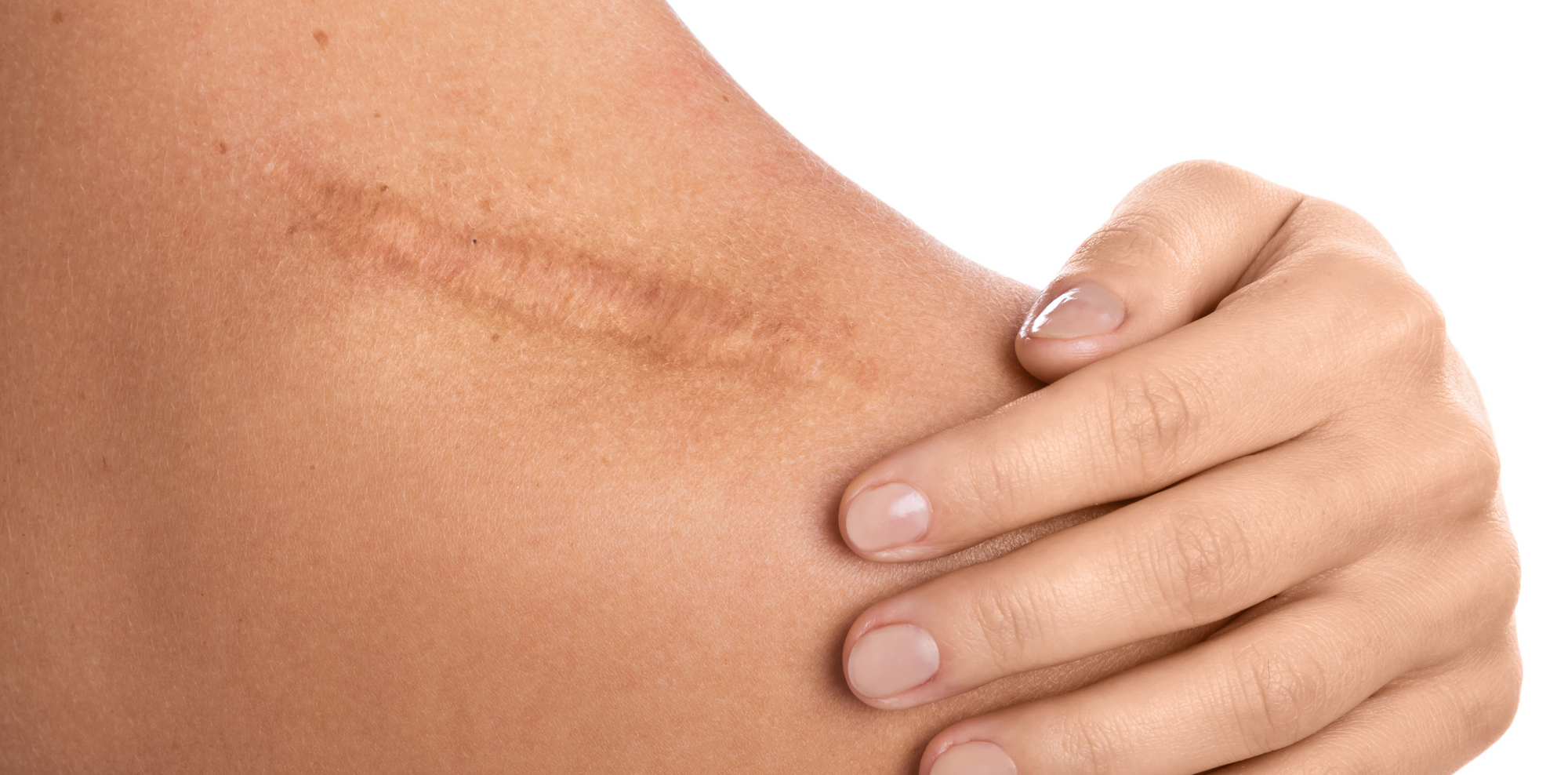RECENT AND OLD SCARS: WHAT PRECAUTIONS TO TAKE WITH THE ARRIVAL OF SUMMER?

Did you know that the sun and scars don't mix? Indeed, scars can become permanent marks when exposed to the sun. With summer approaching, it's essential to know how to protect and treat your scars, whether new or old, to minimize their appearance. Here is a complete guide to taking care of your scars and making them less visible during the summer season.
1- Are certain scars more at risk?
It doesn't matter its size or what your scar is caused by: surgery, acne mark, scratch from a fall, burn, eczema patch. As soon as there is a skin lesion, it is more likely to become pigmented under the effect of the sun. UV rays can then cause the appearance of a brown spot on the scar. Your tan eventually fades but the brown color of your scar persists longer, or even never disappears.
2- Why do scars turn brown in the sun?
During the entire repair process, the skin is thinner and more fragile in the area being healed. When exposed to UV rays from the sun, your damaged skin overreacts to protect itself by producing excess melanin. Melanin is the brown pigment responsible for skin color. When melanin production is excessive, brown spots appear on scars, a phenomenon called hyperpigmentation. These spots can become permanent if not properly protected from the sun. It is therefore crucial to keep scars protected from UV rays to avoid this hyperpigmentation.
3- Should I differentiate between marks and scars?
Although a mark/spot is a little different (inflammation of the skin) from a scar (damage to the dermis), both need to be protected from the sun.
The most common way to classify scars is to divide them into three categories: "flat scars", atrophic and hypertrophic.
"Flat scars" they include
>> They are differentiated from post-inflammatory erythematous marks (pink to red): Caused by vasodilation of superficial skin vessels. They are more frequent and visible on fair skin.
Dimpled scars, often referred to as atrophic acne scars, or some surgical scars, result from an insufficient healing process in the skin, leading to skin depression.
Raised scars, thick and hypertrophic, as well as keloids, which are growths, are the result of excessive collagen production during healing, leading to visible elevations on the skin.
4- How to promote good healing?
The healing process is very different from one person to another. Several factors come into play during tissue repair, such as diet, diabetes, smoking and deficiencies. in vitamins and minerals.
However, by protecting, hydrating and nourishing your scar and surrounding skin with appropriate care, you will help your skin better manage this healing phase which can last up to 18-24 months.
- protect your skin from the sun at all times as long as the scar is not said to be "mature" (flat, supple, identical coloring to neighboring tissues - after 18-24 months)
- hydrate and nourish the skin of your scar at least twice a day
We favor cosmetic treatments rich in ceramides, fatty acids, vegetable glycerin and anti-inflammatory, soothing, circulatory and healing ingredients rich in vitamin C and provitamin A.
- massage your scar to stimulate blood circulation and ensure harmonious collagen production while limiting adhesions (for surgeries, generally 3 -4 weeks after the operation, with agreement from your surgeon).
Also make sure to drink enough water to hydrate your skin from the inside (deep layers of the skin) and vary your diet (fruits, vegetables, meats, eggs, fish) for a good supply of vitamins, minerals and proteins.
When your scar is old, if it is flat or atrophic, you can use treatments rich in provitamin A such as rosehip oil to promote cell renewal and improve the elasticity of the skin (production of elastin and collagen).
Conclusion
If it is important to properly moisturize and massage your scar to ensure good healing of the tissues,it is just as essential toproperly strong> protect from the sun to limit its coloring.

Comments
0 Comments
Leave a Comment